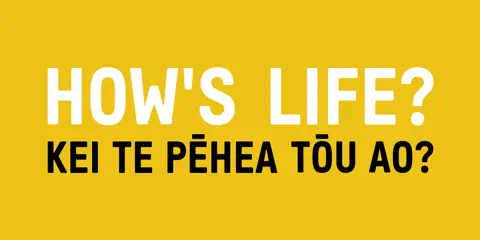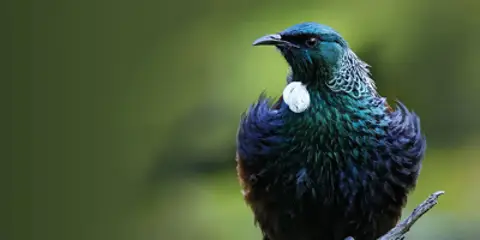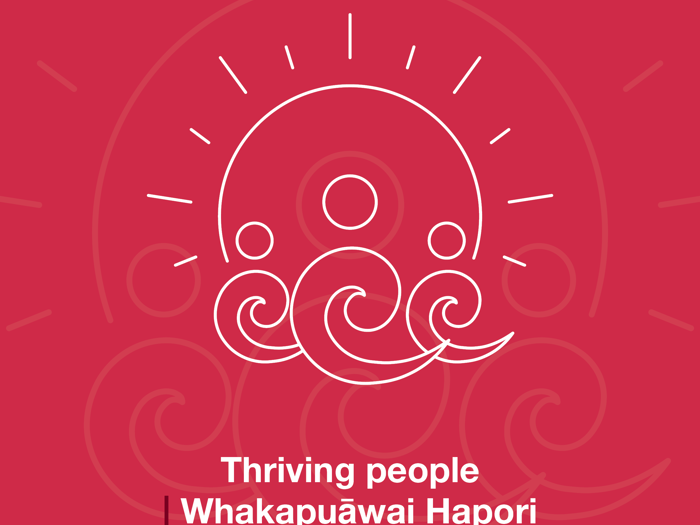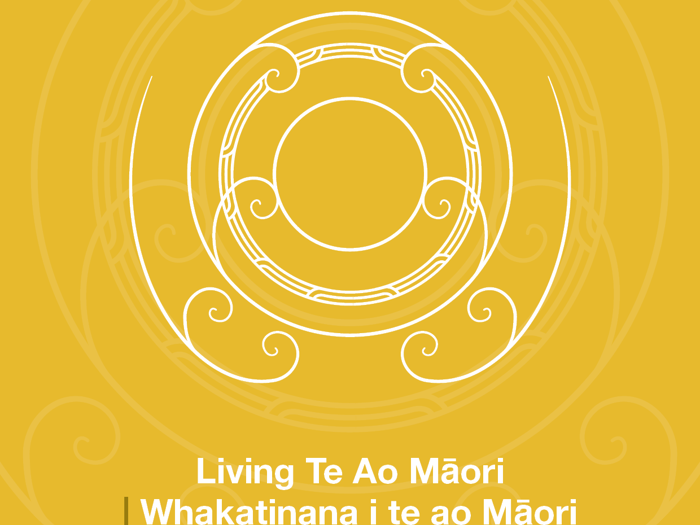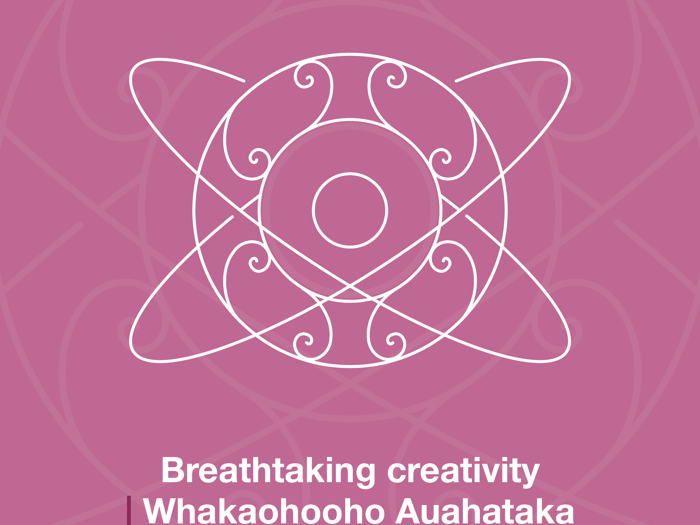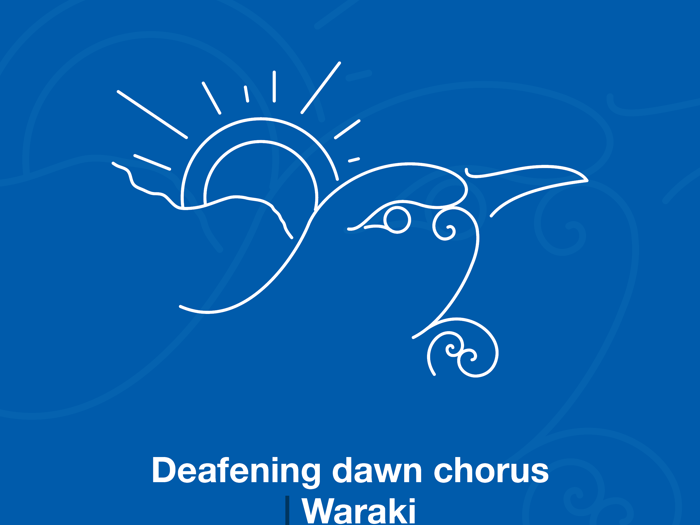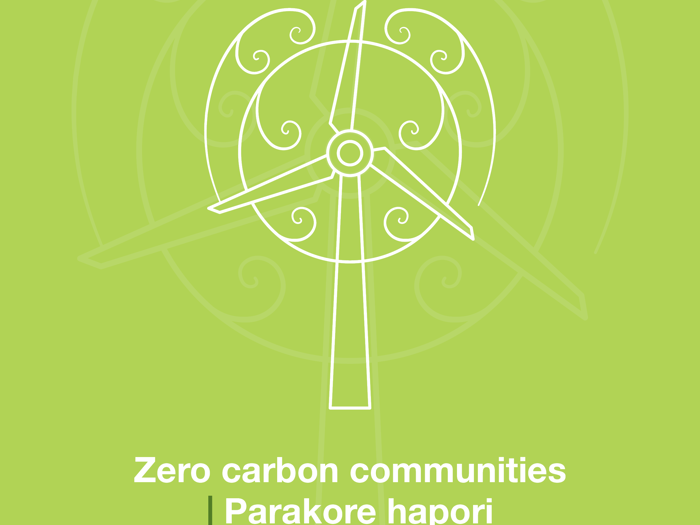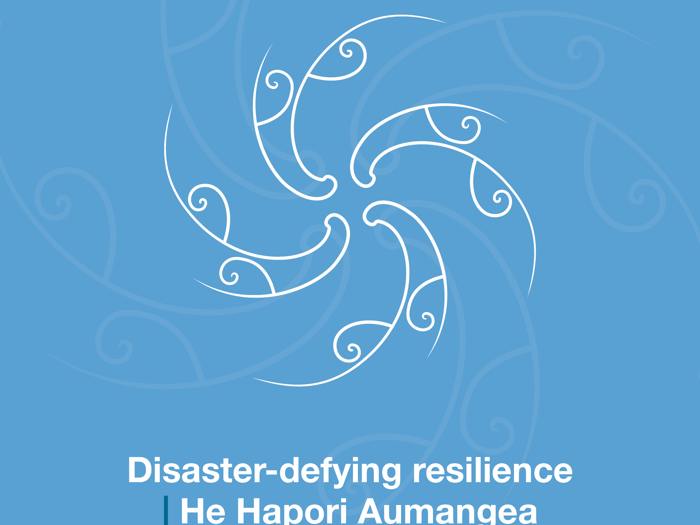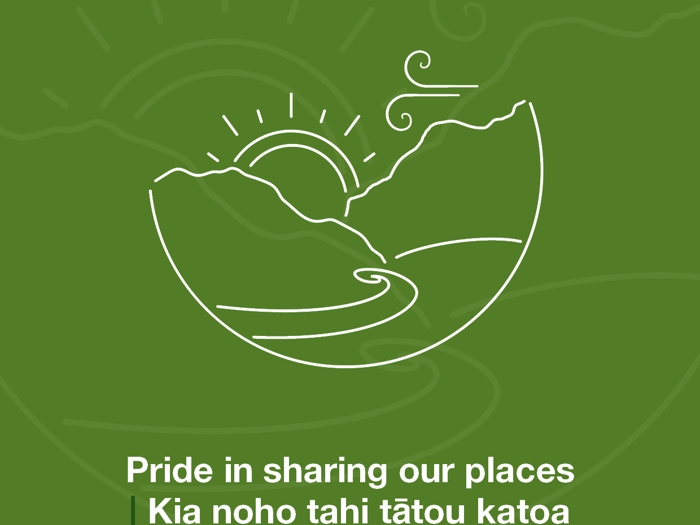- Your Council
- News
- Newsletter Archive
- Careers
- Consultations
- Council Documents
- Council Meetings
- Council Projects
- Climate Change and Biodiversity
- District Plan
- Elected Members
- Elections
- Media Centre
- LGOIMA (information) requests
- Public Notices
- Sister Cities
- Our Strategic Framework
- Fast-track Approvals Act
Our strategic framework
Our Strategic Framework and Investment Priorities outline how the community’s aspirations and wellbeing drive everything we do. The framework identifies areas we need to prioritise to address local issues and make meaningful progress towards meeting community outcomes.
This page provides more detailed information about each of the components that make up our Strategic Framework.
Quick links
A snapshot
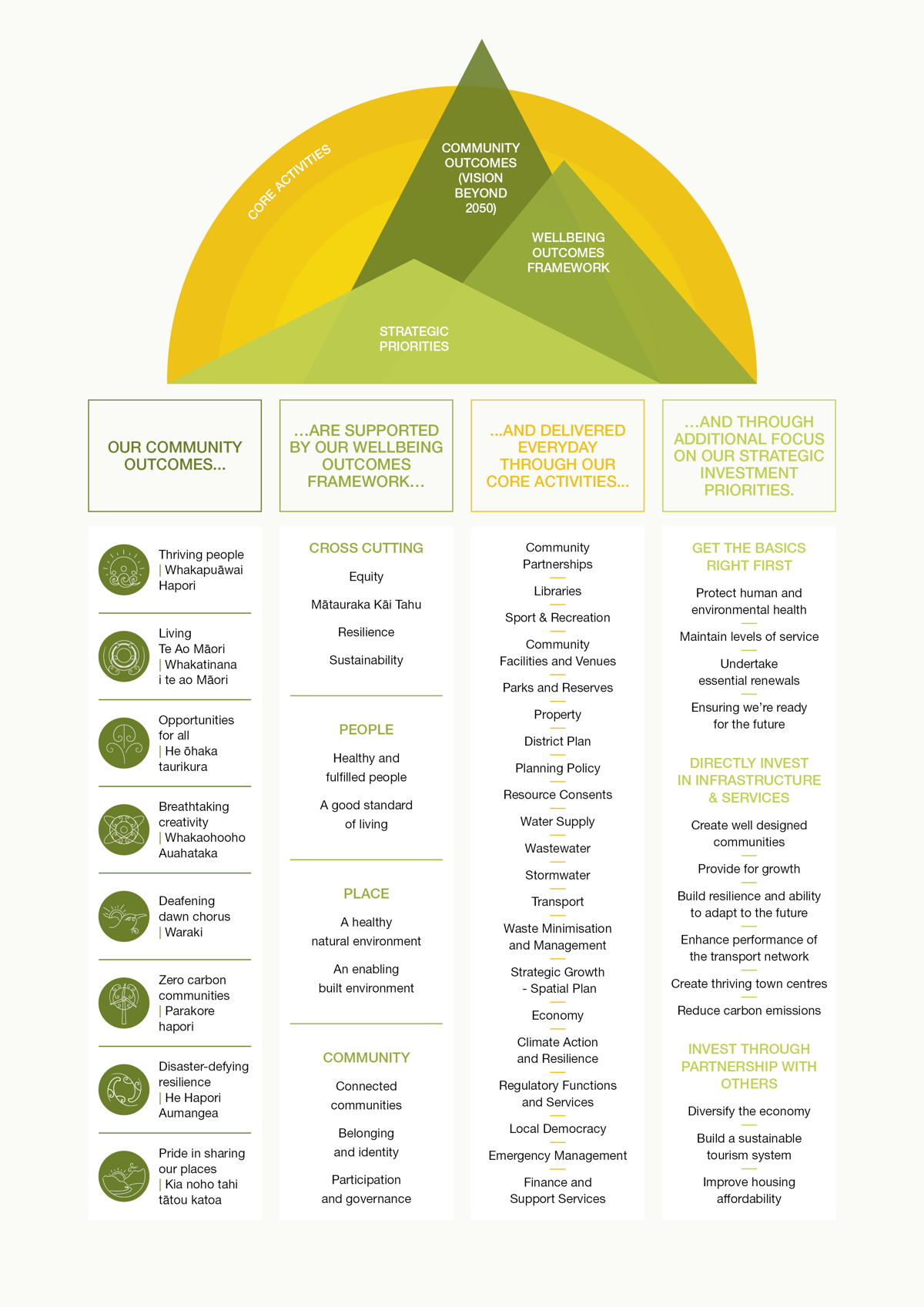
Our Community Outcomes – Vision Beyond 2050
Our community outcomes are defined in Vision Beyond 2050 ‘A unique place. An inspiring future | He wāhi Tūhāhā. He āmua whakaohooho’. These outcomes reflect the community’s aspirations for itself and the values that collectively define what is unique about our district.
They are owned by the whole community and have been used to guide work by other organisations across the district.
Wellbeing Outcomes
The community outcomes are supported by our wellbeing outcomes framework, which guides how Council contributes to the wellbeing of our people and environment now and into the future. This framework is based on the Wellbeing Framework for Otago developed by Otago Regional Council in conjunction with Councils across the region.
The wellbeing outcomes are defined below:
-
Healthy and fulfilled people: People live safe, meaningful lives with good physical and mental health.
A good standard of living: People have good livelihoods, with access to quality employment and education. Individuals, families and whānau are able to prosper and support themselves.
Close -
A healthy natural environment: The mauri of the taiao is respected and preserved. Air, water, land, and biodiversity is healthy and its natural beauty endures.
An enabling built environment: Spaces, connections, and infrastructure empower people to live well now, and in the future.
Close -
Connected Communities: Communities and networks are cohesive and provide opportunities for positive social interaction and support.
Belonging & Identity: People of all backgrounds feel a sense of belonging. People are able to practice and share culture and traditions.
Participation & Governance: Formal and informal governing bodies function effectively through active and diverse engagement.
Close -
Equity: All people & communities have access to support appropriate to their needs.
Mātauraka Kāi Tahu: Outcomes are considered from the perspective of Kāi Tahu & measured based on what is important to them.
Resilience: Our community are resilient to negative shocks & we plan for recovery.
Sustainability: Needs of the current population is balanced against safeguarding the needs of future generations.
Close
Measuring wellbeing across the district
The following dashboard has been made available to the public to bring together local wellbeing insights from a range of data sources. The dashboard is like a ‘fact file’ that can be consulted by anyone looking to inform decision-making that supports positive community wellbeing outcomes.
If you have any questions about the dashboard, please get in touch with QLDC Policy Data Analyst Nathan Brown: nathan.brown@qldc.govt.nz
Strategic investment priorities
Get the basics right first
Our foundational priority is that we get the basics right first. This means making sure we deliver on essentials before investing in areas that are considered more discretionary, aspirational or where timing is more flexible.
For us, getting the basics right means we prioritise investment in:
-
Ensuring our infrastructure, facilities and services meet legislative and regulatory requirements.
Close -
We need to prevent a material deterioration in the quality and accessibility of our services.
Close -
Maintaining our existing assets will assist in ensuring there is no material degradation in our service offerings, resilience will improve, risks can be maintained at acceptable levels, and more expensive interventions are avoided in future.
Close -
We will continue planning to provide for projected growth; well-developed structure and master plans, asset management plans, and project designs to ensure we have a clear investment roadmap and scoped projects that can be progressed if funding becomes available.
Close
Directly invest in infrastructure and services
Delivering infrastructure and community services are at the heart of what we do every day.
Funding constraints mean we can’t always do this on our own. We often need to partner with others to obtain funding beyond what we can raise through rates, borrowing or other existing forms of revenue and sometimes this means we need to adjust our priorities. For example, where we receive funding from central government, their priorities often drive the projects we invest in. The funding arrangements we rely on are outlined in the Finance Strategy.
Our focus areas include:
-
Communities can access and build community relationships and connections through parks, open spaces, and community facilities in their neighbourhood.
Ensuring our people can connect, socialise, play, learn and participate in a wide range of social, cultural, art, sport, and recreational activities. As communities grow ensuring greater access to a range of social and recreational facilities will help to improve the health and wellbeing of communities.
Priorities in this area are outlined in the Community Facilities Strategy, Parks and Open Spaces Strategy and the Infrastructure Strategy.
Close -
We provide for the development of infrastructure, green spaces and community facilities that meet the needs today and of the future. As a Tier 2 Council we are required to plan well for growth and ensure that communities and future generations can live in a well-functioning urban environment.
New infrastructure and services will be needed to enable the projected growth expected in the priority development areas identified in the Spatial Plan. The next iteration of the Spatial Plan is being developed and if this identifies different needs, this will inform engagement with partners to deliver investment on our behalf, and/or updates to the LTP through the Annual Plan process.
Current needs are outlined in the Queenstown Lakes Spatial Plan, Community Facilities Strategy, Parks and Open Spaces Strategy and Infrastructure Strategy.
Close -
Queenstown Lakes is a place that is ready and prepared to adapt to a changing climate and natural hazardscape and to respond to emergencies.
We need to embed resilience building and climate adaptation planning across the organisation. This will explicitly target infrastructure upgrades and consider new solutions, built or otherwise, to ensure the district is resilient to the hazards associated with a changing climate. We will continue to work with the Otago Regional Council and the community to build a complete picture of key natural hazard risks across the district and use this evidence base to identify the adaptation and response actions that are possible.
Priorities for this area are outlined in the Climate and Biodiversity Action Plan 2022-2025.
Close -
The transport network enables the effective and sustainable movement of people and goods into and around the district.
The transport network is constrained geographically, with numerous parts of the district served by single routes, which are vulnerable to closure. The dispersed, low density settlement pattern within the district means many people are reliant on private vehicles to move around. As our district grows (both residential and visitor) the transport network is becoming increasingly constrained, adding to congestion, emissions, productivity losses, and safety risks.
Priorities in this area are developed in partnership with NZ Transport Agency Waka Kotahi and the Otago Regional Council and within the Infrastructure Strategy.
Close -
Our core urban centres (Queenstown, Wānaka) are welcoming, thriving, and provide for the needs of both locals and visitors.
Our urban centres support rapidly growing populations and large volumes of visitors on a daily basis. We want our urban centres to be places that locals are proud of, visitors want to enjoy and respect, and give business-owners confidence to continue operating and investing.
Current needs are outlined in the Spatial Plan and the Town Centre Masterplans.
Close -
Our district reduces its greenhouse gas emissions by 44% by 2030 and achieves net-zero greenhouse gas emissions by 2050.
Council plays a vital role in driving carbon emission reductions for our communities, either through direct action or via collaboration with partners such as the private sector, to meet the reduction targets for 2030 (44% reduction against 2019 baseline) and 2050 (net zero). To meet these challenges, we are embedding new ways of working across our operations and influence others to do the same. We will continue to take specific action to reduce emissions from our operations, in line with our emissions reduction plan and Tōitu Carbon reduce certification.
Our priorities in relation to climate change are outlined in our Climate and Biodiversity Action Plan 2022-2025.
Close
Invest through partnership with others
The following priorities are critical for our district but require a different approach. These are areas where QLDC’s role is not one of direct investment, rather leadership, facilitation and coordination across the district.
-
Anyone who chooses to live here can easily access quality, stable, affordable housing now and into the future.
Our district continues to experience unprecedented levels of growth in terms of population, visitors, and economic growth. Housing choice and affordability have not kept up and as a result many residents struggle to find suitable, affordable, accessible, secure homes.
The district is now one of the least affordable places in Aotearoa New Zealand to live, but to some degree these challenges are being felt across the country. Addressing housing need is complex and needs a partnership approach as there is no single solution. The Joint Housing Action Plan8 outlines nine housing solutions with a focus on increasing housing across the housing continuum, but with a particular focus on affordability.
Close -
Improve coordination to ensure visitors tread lightly and are a welcome contributor to the social, economic, cultural and environment story of Queenstown Lakes.
The Regenerative Tourism Plan (Travel to a Thriving Future)9 aims to improve local and visitor wellbeing and experience, forge connections between people and places, and enable healthy ecosystems, so the district becomes known as a leading example of how travel creates a thriving future. The plan aims to achieve regenerative tourism and a carbon zero visitor economy by 2030. QLDC partners with Destination Southern Lakes, the independent organisation leading the delivery of the plan.
Close -
Build economic resilience, capability, and productivity so that the district both values what visitors bring to the community and is not so reliant on visitors for economic success.
Queenstown Lakes is rising to the challenge of building a resilient and sustainable economy that offers a diverse range of career and income opportunities not solely focused on hosting visitors. The Economic Diversification Plan (New Pathways to a Thriving Future) will ensure that Queenstown Lakes continues to be a special place for residents and visitors today, with opportunities for future generations yet to come.
Close
Using our strategic framework to build the capital programme
We have used our strategic investment priorities to build a proposed capital investment programme for the district. The first two years of the capital programme focus on getting the basics right, with other strategic investments only being included in addition to these from year three.
As we’ve built the programme, we have tried to balance debt and rates increases with the need to continue to invest in infrastructure and services that deliver outcomes for our communities. This means we have not been able to able to invest as extensively in our strategic priorities as we would like.
The proposed capital investment programme is included in the draft Long Term Plan 2024-2034 which is now open for public consultation until 28 July 2024. Visit https://letstalk.qldc.govt.nz/long-term-plan-2024-2034



